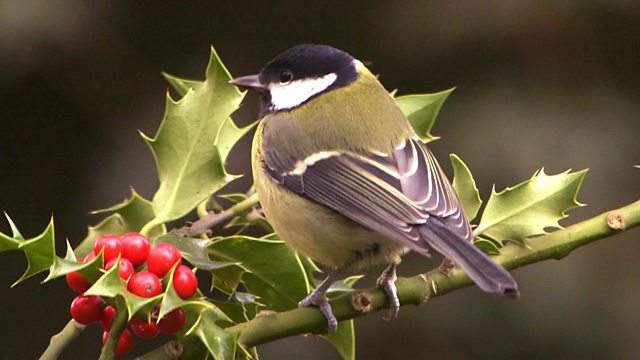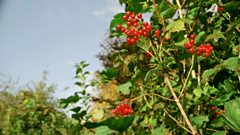
Episode 31
Monty Don prepares the flowering borders in the Jewel Garden for winter. Carol Klein celebrates berry-laden hedgerows and Rachel de Thame visits Julian Clary in his garden.
Monty Don starts to prepare the flowering borders in the Jewel Garden for winter and makes a big garden bonfire.
Carol Klein celebrates berry-laden hedgerows and shows how to grow them into new trees.
Rachel de Thame brings memories of Noel Coward and of the summer just passed when she visits Julian Clary in his garden.
And Monty also puts up bird boxes around the garden in the hope that robins and wrens will seek them out over the winter and that they will be nesting in them next spring.
Last on
More episodes
Previous
Next
You are at the last episode
Clip
-
![]()
Propagating guelder roses
Duration: 01:41
What to do about dead or dying trees

If you have a tree that has been dying back through the summer and lost its leaves early, now is a good time to identify the problem and remove it if necessary, rather than leave it to fall down in winds.
��
One of Monty’s ornamental pear trees lost all its leaves, while the same tree nearby is still fully clothed, so it’s easy for him to see the extent of the problem. If you’re less��sure whether or not there’s life in your tree, scrape the thin bark on the younger stems with your fingernail to see if there’s green wood beneath it. Twigs that are dry and brown throughout and snap very easily won’t come back into leaf in spring.��
If your tree only has a section of dead growth on it, this can be sawn out with care. If the dieback extends throughout the canopy, removing the tree altogether is probably best. Small trees are usually manageable to remove but do take care when using a hand saw (gloves, goggles and a companion are all a good idea). Larger trees are better left to a tree surgeon.
��
One of the most common causes of death in trees is root rots like Honey Fungus and Phytopthora. For help with identifying these, follow the link below. If you suspect your tree has one of these diseases, it’s worth digging out all the roots, as any left in the ground can harbour the fungus and allow it to spread to other plants.
��
��(www.rhs.org.uk)
Hedgerow foraging

Hedgerows have long provided habitats for wildlife and food for foraging but Carol Klein reveals they can also be an excellent source of propagation material.
��
Carol takes hips, haws and hardwood cuttings from her own wildlife hedge at Glebe. Before you collect any plant material from the countryside, there are a few things to consider….
��
Check who owns the land first. If it is privately owned, you should ask permission from the land-owner. If it forms part of a nature reserve, Wildlife Trust site, Site of Special Scientific Interest (SSI) or is owned by the National Trust, there will be byelaws governing it. These may well prevent foraging so it is best to contact the relevant organisation first to find out how their guidelines affect your plans.
On other land, small parts of most plants can usually be picked but take only what you need for private use, making sure you leave plenty of fruits and seeds for wildlife and avoid damaging nearby plants. Some rare plants are protected under Schedule 8 of the Wildlife and Countryside Act so it’s worth checking this list (available online) before going out collecting.
��(www.thewildflowersociety.com)
Jobs for the weekend: Check stored fruit
If you’ve gone to all the trouble of carefully picking and storing fruit, it’s worth checking them regularly throughout the winter. Remove any that are damaged or turning brown as this rot will only spread. Of course you can eat the good bits from any of the fruit that you remove.
��
��(www.rhs.org.uk)
Jobs for the weekend: Tidy and mulch rhubarb
The rhubarb season is now over. You can pick and eat any upright stems (though they may be tough at this time of year) but clear away any that have fallen or died back. Weed between the plants and mulch them generously to feed them and hold in moisture, ensuring a good harvest for early spring. Take care not to mulch over the crowns as they actually benefit from exposure to cold over the winter and a warm, wet mulch might lead to rotting.
��
��(www.bbc.co.uk/gardening)
Jobs for the weekend: Net brassicas against pigeons
As we go into winter there are fewer and fewer vegetables in the garden but many of the brassicas are coming into their own and will last right through until the spring. However, it’s not only humans that like to eat them – pigeons love them, particularly when there’s not much else around, so net them to protect them.
��
��(www.bbc.co.uk/gardening)
Credits
| Role | Contributor |
|---|---|
| Presenter | Monty Don |
| Presenter | Carol Klein |
| Presenter | Rachel de Thame |
| Series Editor | Liz Rumbold |
| Producer | Babs Lewis |

